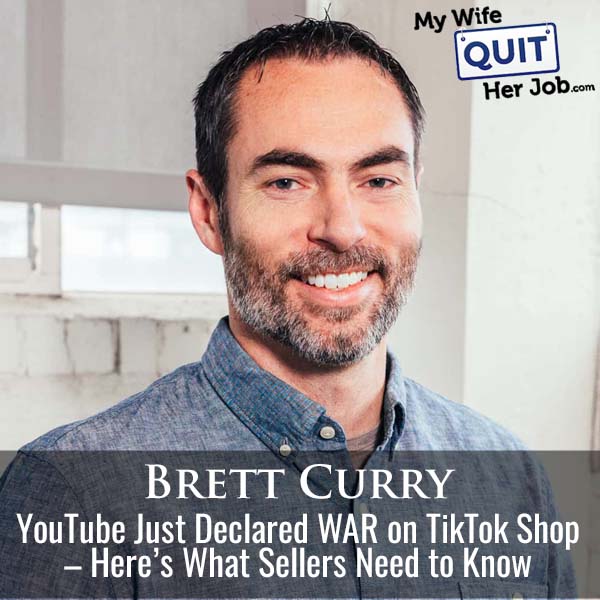597: YouTube Just Declared WAR on TikTok Shop – Here’s What Sellers Need to Know With Brett Curry

```html YouTube Enters Social Commerce Arena, Challenging TikTok Shop
YouTube is intensifying its push into social commerce, directly competing with TikTok Shop and reshaping online selling strategies for e-commerce businesses. The platform's latest initiatives, including shoppable ads and integration with creator content, present new opportunities for brands seeking to diversify their advertising efforts and tap into YouTube's vast user base.
YouTube's Social Commerce Play: Key Takeaways
YouTube is aggressively pursuing social commerce, offering sellers new avenues to reach customers. Shoppable YouTube ads and creator collaborations are central to this strategy. Brands are seeking alternatives to Meta (Facebook and Instagram) due to concerns about ad spend concentration. Incrementality, measuring the true impact of ads, is crucial for evaluating YouTube's effectiveness.
Expert Analysis: YouTube's Potential and Challenges
Brett Curry, CEO of OMG Commerce, an e-commerce agency specializing in pay-per-click advertising, highlights the growing interest in YouTube as a social commerce platform. "There's a constant drive to diversify," Curry notes. "Most DTC brands still spend the majority of their ad budget on Meta, and that's an uncomfortable place to be." He emphasizes the importance of incrementality, referring to a House Analytics study that suggests YouTube's impact is often underestimated by traditional metrics.
According to the House Analytics incrementality study, YouTube ads are more effective at driving incremental sales than what is measured by the platform's own reporting tools. This is attributed to the fact that many YouTube viewers are watching on connected TVs where direct clicks are difficult to track.
The Rise of Connected TV Commerce
YouTube's dominance on connected TVs is a significant factor in its social commerce potential. "YouTube is bigger than Netflix, Hulu, Disney+, Peacock, and Prime Video combined on connected TVs," Curry explains. This widespread use presents a unique opportunity for brands to reach a large audience, even if direct click-through rates are lower compared to mobile or desktop platforms.
Historical Context: E-Commerce and Social Media
The integration of e-commerce and social media has been a gradual but transformative process. Initially, social platforms served primarily as marketing channels, driving traffic to external websites. However, the rise of platforms like TikTok Shop has demonstrated the potential of integrated shopping experiences, where users can discover and purchase products without leaving the social environment. YouTube's move into social commerce represents a further evolution of this trend.
Social Media and Job Market
The shift towards social commerce is also impacting the job market. As brands invest more in social selling, there is a growing demand for professionals with expertise in areas such as social media marketing, content creation, and influencer management.
YouTube Shopping: How it Works
YouTube offers several options for brands looking to sell products on the platform:
Shoppable Ads: Pre-roll video ads that feature product listings alongside the video content. Creator Content: Collaborating with YouTubers to promote products and turn their content into ads. YouTube Shopping: Allows creators to connect their stores to their YouTube channels, enabling viewers to purchase products directly from their videos or channel pages.
Challenges and Opportunities
While YouTube presents significant opportunities for e-commerce businesses, there are also challenges to consider. Accurately measuring the return on investment (ROI) of YouTube ads can be difficult due to the platform's unique viewing environment and the limitations of traditional tracking metrics. Brands need to focus on incrementality and consider factors such as brand lift and search lift to fully understand the impact of their YouTube campaigns.
The Incrementality Factor
Curry emphasizes the importance of incremental return on ad spend (IROAS), which measures the sales generated specifically because of advertising, rather than sales that would have occurred regardless. He notes that YouTube's internal reporting often underestimates the true impact of its ads, making it crucial for brands to conduct incrementality studies to accurately assess their ROI.
The Future of Social Commerce on YouTube
As YouTube continues to invest in social commerce features and refine its advertising platform, it is poised to become a major player in the online selling landscape. By embracing innovative strategies and focusing on incrementality, brands can leverage YouTube's vast reach and engaged audience to drive sales and build brand awareness. ```
Originally sourced from: WifeQuitHer Job
